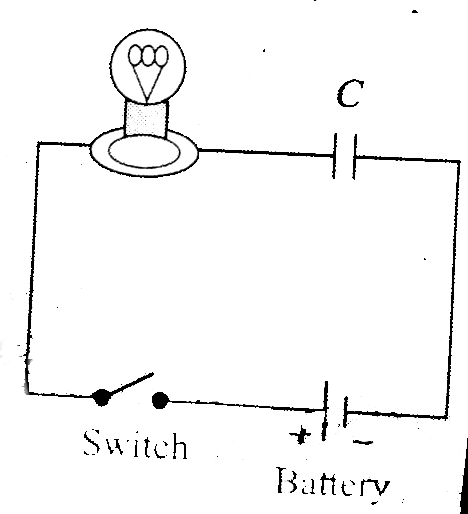[A] : Aspergillus is used as bioindicator .
[R] : Aspergillus niger is sensitive to some trace elements .
If both A and R are true and R is the correct explanation of A
If both A and R are true but R is not the correct explanation of A
If A is true and R is false
If both A and R are false
Step by step video & image solution for [A] : Aspergillus is used as bioindicator . [R] : Aspergillus niger is sensitive to some trace elements . by Biology experts to help you in doubts & scoring excellent marks in Class 12 exams.
Updated on:21/07/2023Topper's Solved these Questions
Similar Questions
Frequency of a photon emitted due to transition of electron of a certain element from L→Kshell is found to be 4.2×1018Hz Using Moseley 's law, find the atomic number of the element , given that the Rydberg's constant R=1.1×107m−1
View SolutionThe three microbes are listed below. Name the product produced by each one of them and mention their use.
(a) Aspergillus niger
(b) Trichoderma polysporum
(c) Monascus purpureus
View Solution[A] : Some of the Sea kelps are used as fertilizers .
[R] : They are important source of minerals .
View SolutionWhen is the higher rate of energy being delivered to a light bulb higher : just after it is turned on, the glow of the filament is increasing, or after it has been on for a few seconds and the glow is steady ?

View SolutionA : Chelating agents used in improving availability of some minerals in soil are actually electron acceptors.
R : They increase solubility of some minerals in acidic soils.
View SolutionA; Homogeniser and ultracentriguge are the devices for separating various cell organelles.
R; The radioactive substances used in biological studies are called Tracer elements.
View SolutionAnswer question numbers 3(a) - 3(d) on the basis of your understanding of the following paragraph and the related studied concepts:
Around the year 1800, only 30 elements were known. Dobereiner in 1817 and Newlands in 1866 tried to arrange the then known elements and framed laws which were rejected by the scientists. Even after the ejection of the proposed laws, many scientists continued to search for a pattern that correlated the properties of elements with their atomic masses.
The main credit for classifying elements goes to Mendeleev for his most important contribution to the early development of a Periodic table of elements wherein he arranged the elements on the basis of their fundamental property, the atomic mass and also on the similarity of chemical properties. The formula of their hydrides and oxides were treated as basic criteria for the classification of the elements.
However, Mendeleev's classification also had some limitations as it could not assign the position to isotopes. He also left some gaps in the periodic table.
3(a) state Mendeleev's Periodic Law.
3(b) Why did Mendeleev leave some gaps in the Periodic table?
3(c) if the letter 'R' was used to represent any of the elements in the group , then the hydride and oxide of carbon would respectively be represented as
(i) RH4, RO
(ii) RH4, RO2
(iii) RH2, RO2
(iv) RH2, RO
3(d) isotopes are
(i) atoms of an element with similar chemical properties but different atomic masses.
(ii) atoms of different elements with similar chemical properties but different atomic masses.
(iii) atoms of an element with different chemical properties but same atomic masses.
(iv) atoms of different elements with different chemical properties but same atomic masses.
View SolutionA class of problems that requires one to use permutations and combinations for computing probability has at its heart notion of sets and subsets. They are generally an abstract formulation of some concrete situation and require the application of counting techniques.
A is a set containing 10 elements. A subset P1 of A is chosen and the set A is chosen and the set A is reconstructed by replacing the elements of P1. A subset P2 of A is chosen and again the set A is reconstructed by replacing the elements of P2. This process is continued by choosing subsets P1,P2,...P10.
The number of ways of choosing subsets P1,P2,...P(10) is
View SolutionA class of problems that requires one to use permutations and combinations for computing probability has at its heart notion of sets and subsets. They are generally an abstract formulation of some concrete situation and require the application of counting techniques.
A is a set containing 10 elements. A subset P1 of A is chosen and the set A is chosen and the set A is reconstructed by replacing the elements of P1. A subset P2 of A is chosen and again the set A is reconstructed by replacing the elements of P2. This process is continued by choosing subsets P1,P2,...P10.
The probability that Pi∩Pj=ϕ ∀ i≠j,i,j=1,2,....,10 is
View SolutionA class of problems that requires one to use permutations and combinations for computing probability has at its heart notion of sets and subsets. They are generally an abstract formulation of some concrete situation and require the application of counting techniques.
A is a set containing 10 elements. A subset P1 of A is chosen and the set A is chosen and the set A is reconstructed by replacing the elements of P1. A subset P2 of A is chosen and again the set A is reconstructed by replacing the elements of P2. This process is continued by choosing subsets P1,P2,...P10.
The probability that P1∩P2∩...P10=ϕ is
View Solution